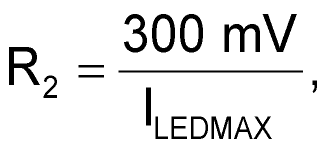Portable systems often use LEDs of different colors and in varying quantities of each color. Some examples are white for the display backlight, green for keypad illumination, and red for power. Typically, the LEDs derive power from at least two power supplies: one for “standard” LEDs (red and green) and one for white LEDs. (White LEDs exhibit a higher forward voltage.) The keypad and other indicator LEDs have current-limiting resistors associated with them. To eliminate these resistors and drive groups of dissimilar LEDs from the same source, you can regulate the current through multiple strings. Four strings of varying LED types derive power from a single power source (Figure 1). The circuit mixes LEDs of different forward-bias requirements, yet keeps the loads reasonably well-balanced through use of a current mirror comprising transistors Q1 through Q4. It also eliminates the need for a separate current-limiting “ballast” resistor on each LED or string of LEDs and provides a common control point (IC1’s ADJ pin) for adjusting the LED intensities.
 |
|
| Figure 1. | In this LED-driver circuit, a switching converter, IC1, and associated components lets you mix LED quantities and types. |
Transistors Q2 through Q4 mirror the current in the diode-connected transistor, Q1. Note that the Q1 current-set string (LEDs D3 through D5) should have an equal or larger voltage than that of subsequent LED strings. (If it doesn't, the current-mirrored strings may have too little voltage overhead to function properly.) You can easily meet that requirement in the first string by placing either LEDs with larger forward voltage drops, such as the approximate 2.8 to 3.7 V range of white LEDs, or more similar LEDs. Then, the circuit can easily accommodate the subsequent strings with lower voltage burdens. The matched-transistor current mirrors maintain a constant and equal current in all LEDs, regardless of quantity and type. That configuration allows the use of a single power supply and a single point for adjusting LED brightness. Any power difference between the reference string and a mirrored string dissipates in the current-mirror transistor for that string:

The current-sense resistor value is

where ILEDMAX is the sum of currents from all the strings.
When driving the same LEDs without the current mirror, you can reduce power dissipation in the sense resistor and ballast resistors by substituting a micropower op amp across the current-sense resistor (Figure 2). That circuit improves efficiency by reducing the resistor values and their associated loss. Increasing the gain of the current-sense signal by approximately 16 allows an equivalent reduction in the value of R2 and the ballast resistors. A typical value for R2 is 15 Ω, which represents a loss of 18 mW: (20 mA)2 × 15 Ω for each of three resistors. If R2 = R5 = R6 = 0.931 Ω, then the resistor power loss drops to 1.12 mW. The op amp draws only 20 µA maximum, which represents a dissipation of 100 µW.
 |
|
| Figure 2. | Modifying Figure 1 as shown reduces the overall power dissipation in a standard application. |
